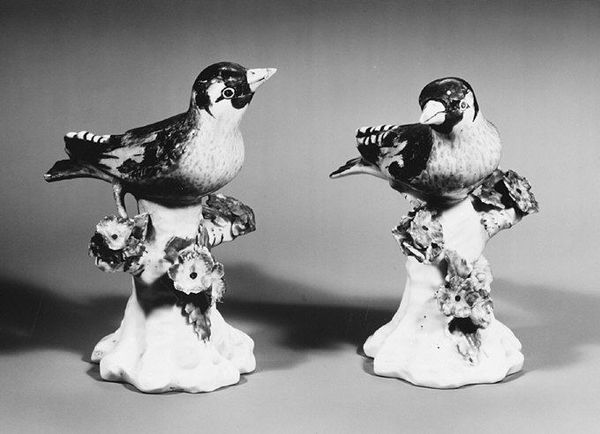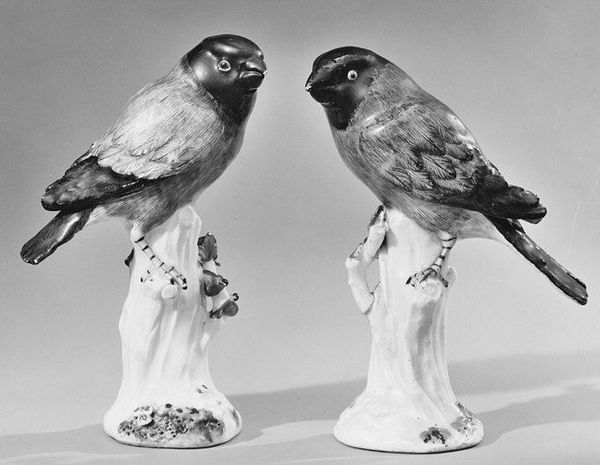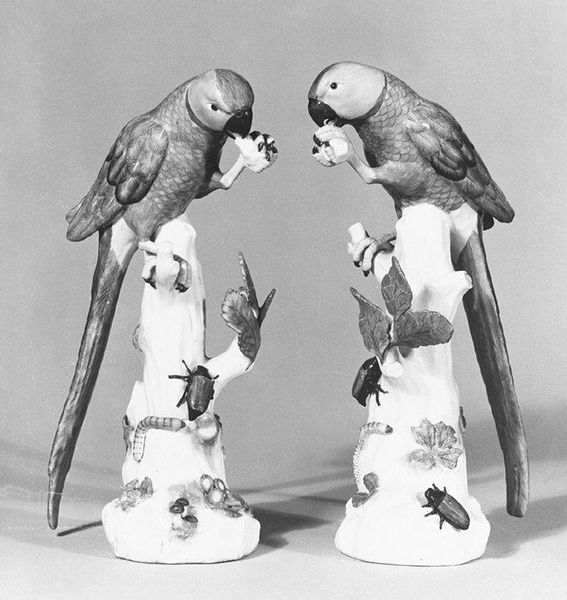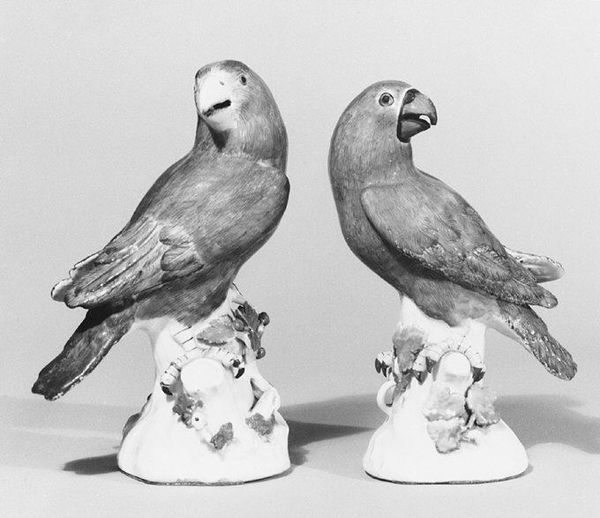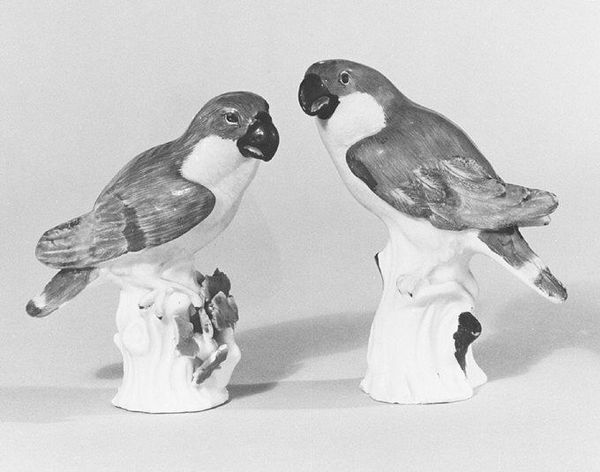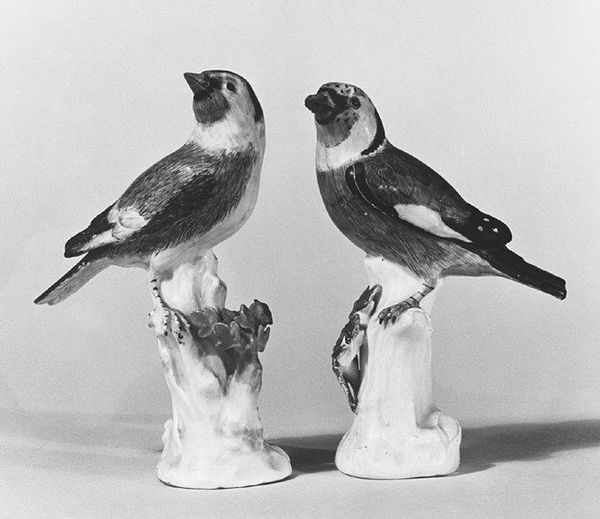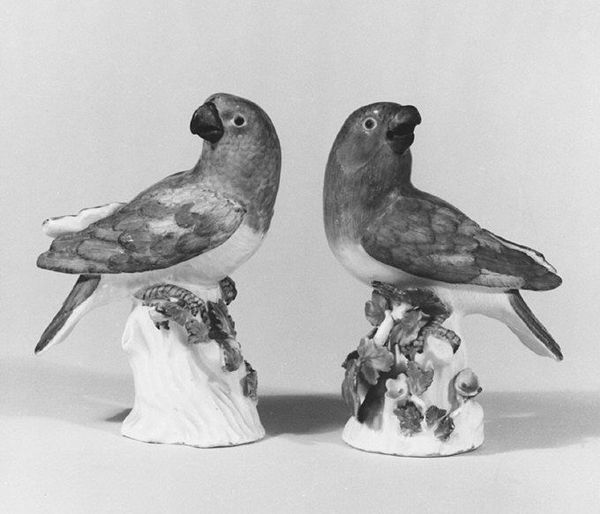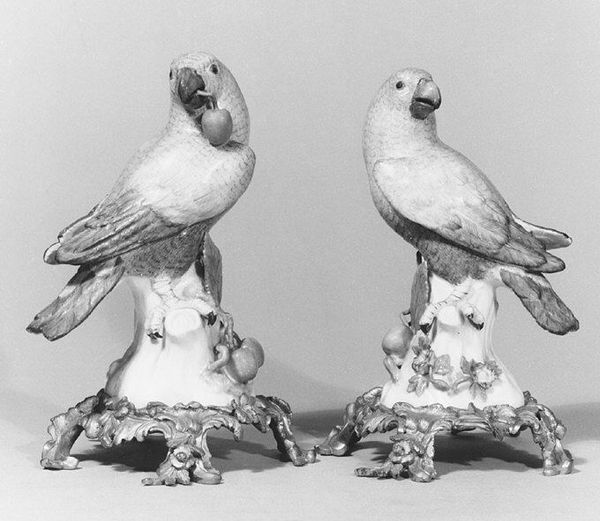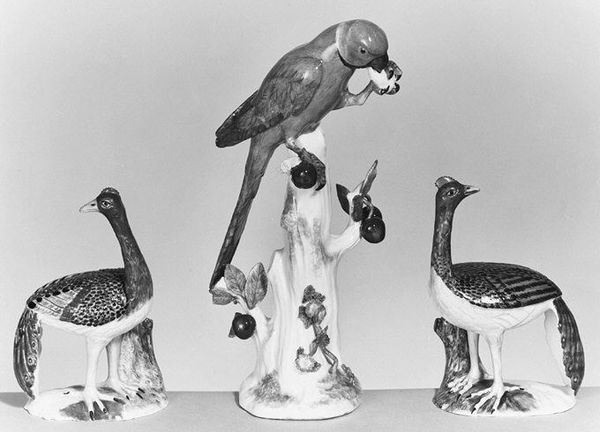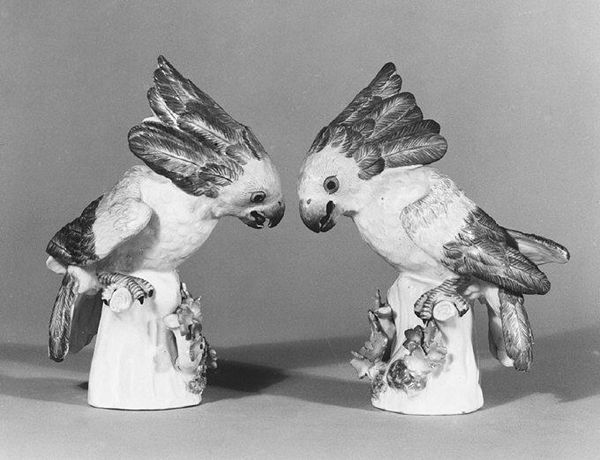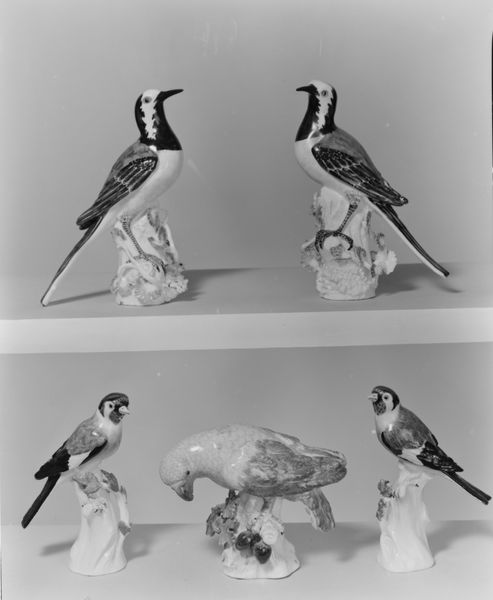
ceramic, porcelain, sculpture
#
sculpture
#
ceramic
#
porcelain
#
sculpture
#
decorative-art
Dimensions: Height: 10 7/8 in. (27.6 cm)
Copyright: Public Domain
Curator: Here we have one of a pair of porcelain sculptures, titled "Woodpecker," crafted around 1740 by the esteemed Meissen Manufactory. The pair currently resides here in the Metropolitan Museum of Art. Editor: They’re certainly arresting, with their beaks open in mid-song. And this gleaming porcelain gives them a fragile, almost ethereal presence. Curator: Precisely. Porcelain, you see, had a unique status at that time. It was the product of extensive material knowledge and technical mastery, seen as akin to alchemy. The production secrets, the labor involved... it was a potent mix. Editor: Porcelain also offered unique opportunities to create symbols, or reproduce things in an attempt to contain them through art. What does the Woodpecker stand for here? Curator: Well, one cannot ignore that in certain cultures, the Woodpecker has traditionally been linked to determination and resourcefulness. One finds the Woodpecker associated with those who relentlessly pursue their objectives, regardless of how difficult they seem. Editor: It strikes me as a display of wealth and status more than anything else. This isn’t some simple clay figurine, is it? Porcelain speaks to a level of access to material and the means to craft something beautiful purely for ornamentation. Curator: Indeed, the rise of porcelain manufactories paralleled increasing international trade. But the Woodpecker as decoration points also towards Europe’s burgeoning fascination with the natural world; to domesticate a little wildness for our delight, rendered with this elaborate material. Editor: Looking closer, you see that each woodpecker perches on its own meticulously crafted foliage with these tiny insects—beetles perhaps? So, what might insects suggest to us? Curator: Symbolically speaking, you might see the insects here as representing resilience and adaptability, common themes throughout nature—qualities the bird can embody and display. Editor: And so, from material and symbols, we find art’s deep connections to ambition and resourcefulness. The intersection of technique and iconography creates powerful pieces for display. Curator: Agreed; it demonstrates how understanding artistic processes reveals the nuanced and fascinating dialogue that art engages in with the broader social and cultural context in which they were created.
Comments
No comments
Be the first to comment and join the conversation on the ultimate creative platform.
